Malachite
Very common mineral of the carbonates and nitrates class.
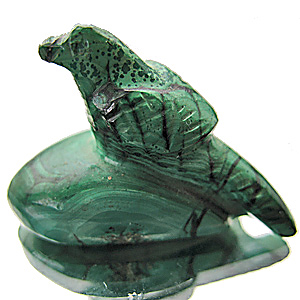
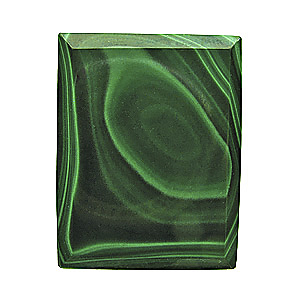
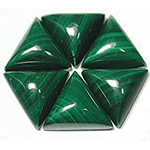
Origin of name: in his monumental work Naturalis hiostoria Pliny the Elder called the mineral molochitis, from the Greek word μαλάχη (malache) for mallow, in reference to the green colour of the leaves.
Synonyms and trade names: none
Can be confused: due to the typical patterns (band, stripes, dots) malachite cannot really be confused with other minerals.
Localities: mindat.org gives a staggering 13.158 known deposits on all continents and Antarctica (July 2019).
The most important deposits are in Congo, Russia and the USA.
In Austria two deposits near Schwaz, Tyrol, are known.
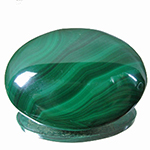
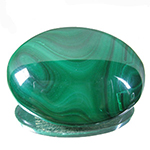
Malachite from Congo
Handling: due to the low hardness (Mohs hardness 3.5-4) malachite should be set and worn with care.
Susceptible to acids and high temperatures. Longer contact with water, particularly with mineral water containing CO2, will destroy the polish. Do not clean ultrasonically, do not electroplate.
Warning: malachite is a copper mineral. Sawing, cutting and engraving releases copper-bearing dust. Since high concentrations of copper are poisonous, proper safety measures (dust mask, dust exhaust) must be taken!
Worth knowing: malachite was very popular in ancient Greece, Egypt, China and in the Roman Empire. The Egyptians carved all kinds of artefacts like amulets and scarabs from malachite and used the powdered mineral as eyeshadow. However, modern science suggests that, contrary to former belief, malachite was not used for the green colour in murals in Egyptian burial chambers.
In Chinese antiquity malachite was also widely used. Rests of green colour on the terracotta army of Qin Shi Huang, the first Emperor of China, were identified as malachite pigment.
Up until the Middle Ages malachite was used by goldsmiths for soldering. The powdered mineral was mixed with fish glue (isinglass) and water, to form an emulsion called gold glue. By heating gold glue in charcaol fire one got a solderable copper alloy which allowed fine gold wires or spheres to be soldered onto gold sheets without melting.
Source: Wikipedia (German)
 Deutsch
Deutsch